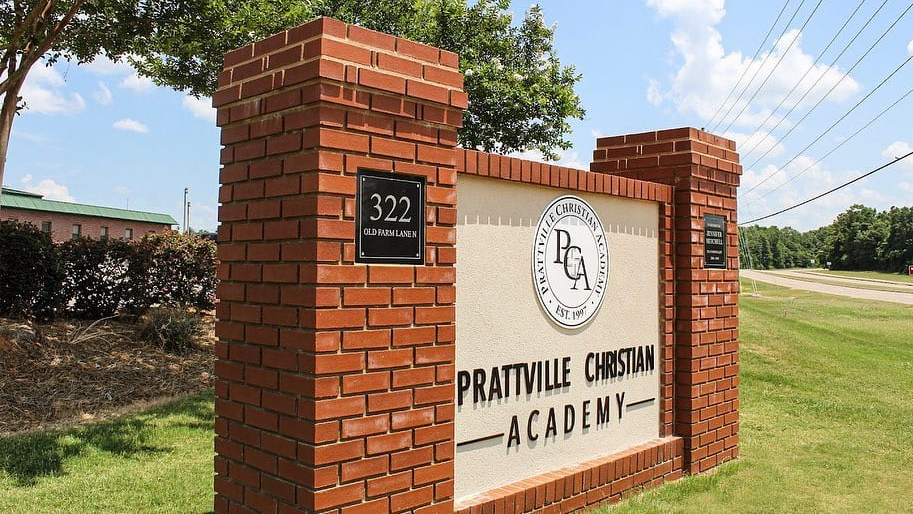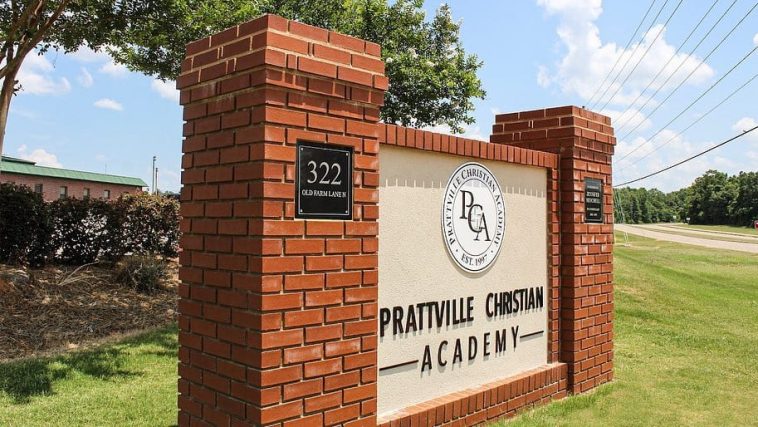
New Building Permits Signal Economic Resurgence Across Alabama
Alabama’s recent wave of building permits has caught the eye of local business leaders, community planners, and residents alike. With over a dozen new construction projects authorized in just one week, many valued at over $1 million, the state appears to be at the inception of a renewed economic vigor. These projects, spanning from Auburn to Birmingham and from Huntsville to Prattville, highlight not only growth in infrastructure but also a broader commitment to elevating community life and future-proofing the state’s economic outlook.
The diverse nature of the projects—ranging from new educational facilities to expansive commercial developments—demonstrates an engagement with numerous sectors, including small business, industrial manufacturing, automotive, electric vehicles, and even business tax reforms. Each building permit is more than just a stamp of approval; it is a stepping stone toward a more robust economy and a better-served public. By taking a closer look at these initiatives, we can appreciate how the state is working through the tricky parts of economic growth while embracing opportunity at every corner.
Spotlight on Educational Infrastructure: Prattville Christian Academy Middle School
One of the most compelling projects is happening in Prattville, where a $4.5 million building permit has been approved for a new middle school at Prattville Christian Academy. This isn’t just any school addition—this is a thoughtfully planned structure that aims to expand capacity and enrich the learning environment for children. The new building will feature state-of-the-art facilities, including a multipurpose room that doubles as a gym, chapel, cafeteria, and even a fine arts performance space, illustrating a multifaceted approach to education and community enrichment.
The construction project will add 10 new classrooms, accommodating an additional 100 students, increasing enrollment capacity to roughly 900 students overall. With an extra weight room and versatile spaces designed to handle athletic events and cultural gatherings, the school is setting itself up not just as a center for education but also as a community hub. Marshall Design Build, the lead contractor, is tasked with ensuring that every detail—from the fine points of architectural design to the little details of safety regulations—is carefully implemented.
Investments like these are key to nurturing the next generation of innovators, thinkers, and entrepreneurs. In many ways, expanding educational infrastructure is an investment in Alabama’s future workforce, particularly in sectors like industrial manufacturing and the rapidly evolving automotive and electric vehicle industries.
Economic Implications of Million-Dollar Construction Projects
The list of new permits includes projects that exceed the six-figure range, with some reaching close to $12 million. This influx of high-value construction activity indicates substantial confidence among investors and developers. Each permit not only represents a capital expenditure but also an opportunity to bolster local employment, stimulate ancillary businesses, and provide a platform for further economic expansion.
For instance, a project in Auburn by Triton Construction Group LLC is worth nearly $7 million, while another in Huntsville by Fite Construction is valued at over $3.5 million. These figures speak volumes about the vitality of the construction and related sectors in Alabama. It’s clear that local governments, private investors, and community stakeholders are aligned in their vision of driving forward a robust economy that can weather the tricky parts of post-pandemic recovery and economic transformation.
The ripple effects of these projects are multifaceted. They offer immediate job creation during the construction period but also lay the groundwork for long-term benefits such as optimized infrastructure and enhanced public spaces. As regional development deepens, communities find themselves better equipped to attract further investment in sectors like small business growth, industrial manufacturing upgrades, and next-generation automotive and electric vehicle manufacturing facilities.
How Educational Investments Bolster Future Workforce Development
Educational infrastructure projects, particularly those like the new middle school at Prattville Christian Academy, have far-reaching benefits. By broadening capacity and upgrading facilities, schools significantly contribute to the development of a future workforce that is both well-rounded and technically proficient. With skills being the main currency in the modern economy, having state-of-the-art facilities ensures that students are not only prepared academically but also gain exposure to modern technologies and practices.
In a world where competitions in industrial manufacturing and automotive sectors are steadily intensifying, an enhanced learning environment offers young people the opportunity to start early. They can explore interests in areas such as robotics, engineering, computer science, and sustainable energy—fields that are particularly relevant to Alabama’s burgeoning electric vehicle market and industrial hubs.
By allowing more students access to quality education, the state creates a self-sustaining cycle of growth. More skilled graduates translate into more competitive local businesses and increased attraction for multinational companies looking to relocate or expand their operations in a highly skilled region. In this way, educational infrastructure acts as the foundation upon which economic resilience is built.
Opportunities and Challenges: Working Through the Complicated Pieces of Construction Economics
The economic potential of these new construction permits is significant, but the pathway to realizing these benefits can be riddled with complications. There are several complicated pieces in the construction process—ranging from funding uncertainties and regulatory hurdles to the nerve-racking challenges of project management on a vast scale. However, stakeholders across the board have shown a determination to figure a path through these confusing bits.
The projects have been certified only after they successfully met regulatory standards and planning requirements. Local governments are increasingly focused on ensuring that each new initiative not only adheres to safety and environmental regulations but also contributes to long-term economic and community goals. It is a process that requires careful balance between ensuring public welfare and encouraging entrepreneurial risk-taking.
Managing Construction Costs and Funding
One of the central issues facing these projects is funding. The hefty price tags attached to these developments can appear overwhelming at first glance. Efforts to secure financing involve complex negotiations among banks, private investors, and sometimes, state agencies. For example, the middle school project, with its $4.5 million permit, must account for every dollar spent on materials, labor, and unforeseen costs. Although these funds initially seem intimidating, many developers have found that detailed planning and community support aid in mitigating these overwhelming challenges.
Developers and local officials are making use of comprehensive financial planning tools to enhance transparency. Detailed cost breakdowns, combined with payment schedules and contingency reserves, help diffuse uncertainty. Using tables and bulleted lists, project managers can more effectively communicate progress to all concerned stakeholders. For instance:
- Initial capital expenditure and funding sources
- Scheduled disbursements and milestone payments
- Contingency budgeting for unexpected expenses
- Cost-benefit analysis of additional amenities such as weight rooms or multipurpose areas
This clarity in financial planning is especially essential in state-wide projects intended to spur economic growth. In the realm of small business and industrial manufacturing, a clear financial roadmap not only inspires investor confidence but also ensures that local tax incentives and community support align with the overall objective of sustainable development.
Addressing Regulatory and Community Concerns
Another tangled issue involves meeting the various regulatory and community expectations that accompany large-scale projects. Local governments strive to work collaboratively with builders and the community to ensure that every construction project meets safety, quality, and environmental standards. When new building permits—each of them representing significant financial commitments—are issued, there is always a mix of excitement and concern among community members.
For example, while a new middle school is generally welcomed, some residents may worry about increased traffic, noise, or changes to neighborhood dynamics. In response, builders and local officials have increasingly turned to community outreach programs, public forums, and periodic updates. Through these channels, community members are invited to ask questions, share their expectations, and provide input on various aspects of the project. Such interactive dynamics are essential for making sure that the development not only adds economic value but also integrates smoothly into the fabric of the community.
Local Business, Tax Considerations, and Industrial Manufacturing Growth
Over the past week, new building permits across Alabama have not only focused on educational and residential facilities but have also extended to commercial and industrial projects. Small business owners and stakeholders in industrial manufacturing are keeping a close watch on these developments as they signal potential shifts in business tax laws, local revenue, and broader manufacturing dynamics.
The economic landscape in urban centers like Huntsville, Auburn, and Birmingham is notably complex. Each project, worth somewhere between $1.4 million to nearly $12 million, contributes to a cumulative industrial uplift that extends far beyond the immediate construction phase. As these projects come to fruition, many local businesses are expected to experience increased patronage, improved infrastructure, and better logistic routes facilitating industrial manufacturing and distribution.
Tax incentives and revised business tax laws play a key role in supporting these growth initiatives. By offering specific incentives, local governments are able to attract businesses from the automotive and electric vehicle sectors. In turn, these sectors not only boost local tax revenue but also stimulate the creation of quality jobs that support broader industrial manufacturing clusters. It is a win-win scenario that promotes a balanced economic cycle, blending the public sector’s efforts with the dynamism of private enterprise.
Incentives for Small Business and Industry
Many economic development boards have introduced incentive packages aimed at supporting small business owners and local manufacturers. These packages can include:
- Tax breaks for companies investing in local infrastructure
- Subsidies aimed at reducing the initial capital strain on new projects
- Partnership programs between public agencies and private enterprises
- Customized training and workforce development initiatives
These measures are not without their challenges, as stakeholders must work through various intricate approval processes and meet several regulatory checkpoints. Yet, in the grand scheme of long-term economic growth, these incentives are super important. They help build a robust ecosystem where innovative small businesses and established manufacturers alike can thrive.
Industrial Manufacturing in the Spotlight
Alabama’s industrial base, long a cornerstone of its economic strength, is poised for a modern transformation. The influx of new construction projects creates opportunities for advancements in industrial manufacturing and the automotive sector. As companies modernize factories and adopt new technologies, the entire state benefits from increased productivity and efficiency. This modernization often brings with it improved environmental standards and a heightened focus on employee safety—factors that are crucial when dealing with large-scale manufacturing operations.
Moreover, amid the growing trend towards sustainable energy, there is an evident shift toward integrating electric vehicle components into industrial production lines. With investments reaching deep into the manufacturing and design aspects of these sectors, Alabama is positioning itself as a potential leader in both traditional and emerging industrial technologies.
When business leaders take a closer look at the combined effects of new construction activity on industrial manufacturing, they see more than just individual projects. They see a network of opportunities that collectively point to a richer, more diverse industrial landscape—an environment that is both resilient and adaptable in the face of rapid technological changes.
Community Impact: Bridging Public Services and Economic Development
Beyond the numbers and financial projections, there is a human dimension to these projects that is equally significant. Educational facilities and new commercial developments are the lifeblood of any thriving community. The new middle school at Prattville Christian Academy, for instance, is an investment in the well-being, education, and future of local families. It is projects like these that, over time, foster communal solidarity and promote social mobility.
Community impact is not limited to schools. The broader array of new building permits will bring a surge of revenue to local governments, which in turn can be reinvested into public services such as healthcare, transportation, and public safety. These developments can help build a balanced societal ecosystem where economic growth and quality of life mutually reinforce each other.
The practical benefits of these impacts include:
- Enhanced neighborhood amenities and public spaces
- Improved emergency services and transportation infrastructure
- Greater accessibility to essential services for families and individuals
- An increase in community pride and civic engagement
While each project faces its own set of nerve-racking issues during the formative stages, the overall result is generally positive. The way these projects are structured and managed sets a precedent by illustrating that growth—no matter how large—is best achieved when community needs and public interests are at the forefront of planning and execution.
Key Takeaways for Stakeholders and Policy Makers
Examining this surge in millennial-dollar construction projects, it becomes clear that collaboration across multiple sectors is essential. Whether it’s addressing funding challenges, mitigating regulatory risks, or simply ensuring that the needs of the community are met, the involved stakeholders are making a concerted effort to work through the twisted parts of project management.
For policy makers, the take-home message is that balanced economic policies that encourage investment in both public infrastructure and private enterprise are super important. They should continue to exploit every available resource to drive industrial modernization and educational excellence—a synergy that not only spurs economic development but also enhances public welfare. Here are several critical strategies that policy makers might consider:
- Strengthening Public-Private Partnerships: Establish frameworks that allow for regular dialogue between state officials, builders, and community leaders. This could help address potential roadblocks as soon as they arise.
- Encouraging Sustainable Construction Practices: Adopting green building standards can pave the way for more resilient and eco-friendly communities, easing the long-term stresses on local infrastructure.
- Optimizing Regulatory Frameworks: Streamlining the permitting process without compromising safety or quality can help reduce the intimidating waiting times associated with large construction projects.
- Investing in Workforce Development: Comprehensive training programs that align with emerging manufacturing trends—especially in the automotive and electric vehicle sectors—will ensure that the local labor force is well-prepared for future challenges.
Strategic policies that are designed to support these initiatives can have a cascading effect by ensuring that new development projects are not only built on solid economic foundations but are also capable of withstanding the little twists and turns that today’s fast-paced business environment throws their way.
Sustainable Growth Amidst Evolving Market Dynamics
As we digest the current wave of construction projects, it’s important to consider how these developments fit within the broader picture of Alabama’s economic evolution. Today, industries are constantly battling through the small distinctions in market trends—especially those that stem from rapid technological change and evolving consumer preferences. From traditional manufacturing to innovations in electric vehicles, the state’s growth strategy must remain flexible and forward-thinking.
Investments in infrastructure like the Prattville Christian Academy Middle School are a testament to a belief in long-term investment rather than short-term gains. When communities invest in education, manufacturing, and smart urban design, they create ecosystems that attract talent, encourage entrepreneurship, and foster innovation. In such an environment, even the nerve-racking uncertainties of large-scale construction tend to subside as tangible benefits emerge over time.
Furthermore, expanding physical infrastructure supports improvements across a number of sectors, including the automotive industry—which is now increasingly entwined with electric vehicle manufacturing. These sectors thrive when the local economy benefits from robust construction activities that lead to better roads, improved utilities, and a more skilled workforce. It is this kind of integrated growth model that gives a state like Alabama its competitive edge in the modern economy.
Integrating Modern Construction Trends with Traditional Values
One notable aspect of these new developments is the seamless integration of modern construction trends with traditional community values. While advanced building techniques and innovative design are clearly evident, there is also a commitment to preserving the cultural and social fabric of local communities. The new facilities are not merely structures; they are designed to be sources of community pride and beacons of progress.
For many local residents, a school isn’t just a location where lessons are taught—it’s a community center where generations have come together, pausing to celebrate milestones and support one another. The new middle school at Prattville Christian Academy, with its blend of multi-functional spaces and modern amenities, is a perfect example of how modern construction can be sensitive to the traditions of the past while setting a clear direction for the future.
This thoughtful approach demonstrates that successful redevelopment is about striking a balance. It requires managing the nervous energy that often comes with change and ensuring that the benefits of modernity do not come at the expense of community traditions. In other words, there is a need to figure a path that honors both the innovative twists of contemporary construction methods and the warm nostalgic appeal of time-tested community values.
Lessons Learned: Community Resilience and the Power of Investment
The current batch of building permits provides a vivid case study in community resilience. Every permit, from a $1.4 million construction project in Calera to an $11.8 million initiative in Oxford, illustrates the tangible ways in which focused investment can help address both immediate needs and long-term challenges. In a landscape filled with confusing bits and nerve-racking twists, there is comfort in knowing that measured, thoughtful investment in infrastructure can foster a more cohesive and prosperous society.
Some of the critical lessons include:
- Investment in infrastructure is essential to future-proof local economies.
- Transparent financial planning fosters community trust and investor confidence.
- Collaboration between public entities and private developers mitigates the overwhelming aspects of large-scale projects.
- Investments in education enhance workforce readiness, which in turn benefits industrial, automotive, and electric vehicle sectors.
Each of these lessons underscores the importance of looking beyond the simplistic view of construction permits as mere bureaucratic tick-marks. Instead, they should be viewed as building blocks in a larger strategy aimed at reinforcing economic resilience and ensuring that all sectors—from small business to high-tech manufacturing—are well prepared to face an ever-changing marketplace.
Future Outlook: Finding Your Path Toward Continuous Growth
Looking ahead, the current wave of construction permits signals a period of sustained optimism for Alabama. The state is not just reacting to short-term pressures but is laying the groundwork for an enduring transformation. From educational institutions that nurture young talent to commercial and industrial projects that drive economic expansion, every permit contributes to building a more secure and dynamic future.
For entrepreneurs, business leaders, and designers, the unfolding projects offer a wealth of opportunities to get into new market sectors. They also provide a chance to work through the tricky parts of funding and project execution while reaping long-term benefits. In a world that is continuously evolving—where technology and consumer preferences keep shifting—it is essential to remain agile and committed to ongoing investment in infrastructure.
This ongoing dialogue between modern construction practices and traditional community needs ensures that growth is not just rapid but also balanced and sustainable. When local governments, investors, and citizens come together to face even the intimidating challenges of large-scale construction projects, they not only build structures but also build communities that are resilient, innovative, and prepared for future challenges.
Conclusion: Building for a Brighter Alabama
In summary, the recent flurry of million-dollar building permits in Alabama is more than just a series of isolated projects—it is a manifestation of the state’s broader vision for a prosperous future. Each project, whether it is a new middle school at Prattville Christian Academy or an expansive commercial development in Huntsville, represents a commitment to shaping a better environment for generations to come.
While the journey through the confusing bits of construction finance, regulatory requirements, and community engagement may sometimes feel overwhelming, the potential rewards are immense. By continuing to invest in both modern infrastructure and educational facilities, Alabama is carving out a pathway that ensures resilience, promotes innovation, and maintains a strong connection to community values.
For business leaders, educators, and policy makers alike, these developments offer a chance to reflect on the critical role that careful planning and significant investment play in fostering a thriving community. As the state continues to steer through the nerve-racking turns and tangled issues that come with rapid development, the positive long-term effects promise a brighter and more sustainable future for all Alabamians.
Ultimately, the future of Alabama’s economy and society will depend on how well we manage the subtle details of both construction projects and community-building initiatives. With collaboration, transparency, and a shared vision for progress, every building permit—a stamp of approval on a million-dollar-plus project—brings us one step closer to a dynamic, innovative, and unified state.
As we look ahead to the next decade, it is clear that Alabama’s journey is one of transformation, resilience, and opportunity. The investments being made today will serve as the foundation for tomorrow’s success, ensuring that every sector—from small business to industrial manufacturing, and from educational excellence to cutting-edge automotive research—benefits from a strong, well-built infrastructure. This is a time for all stakeholders to come together, remain committed, and actively participate in the exciting future that is being built right before our eyes.
Originally Post From https://thebamabuzz.com/prattville-christian-academy-new-building-permits/
Read more about this topic at
Study: Alabama’s commercial construction industry fueled …
Study: Construction industry output impact is $17.2 billion …


